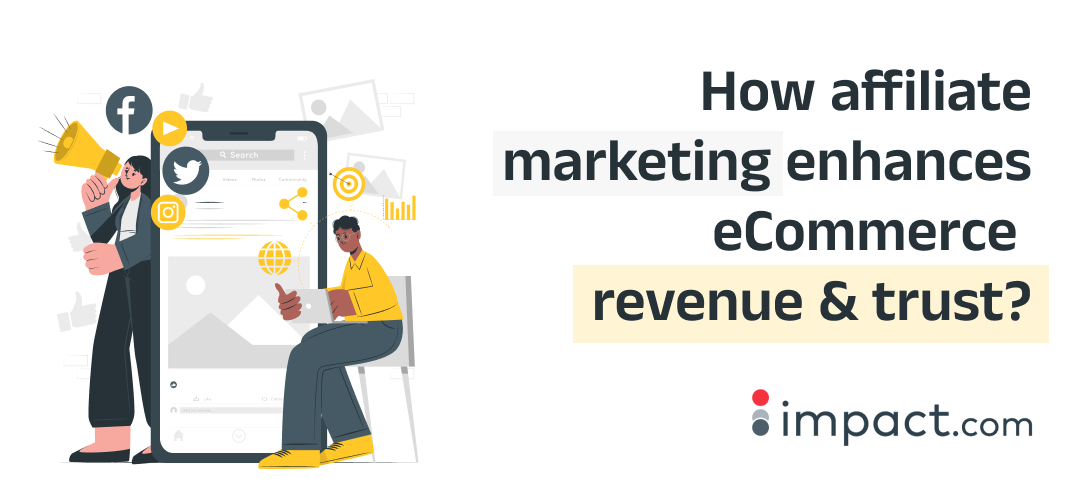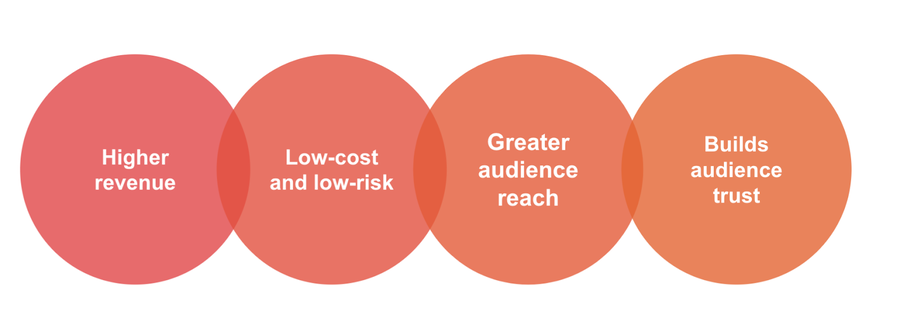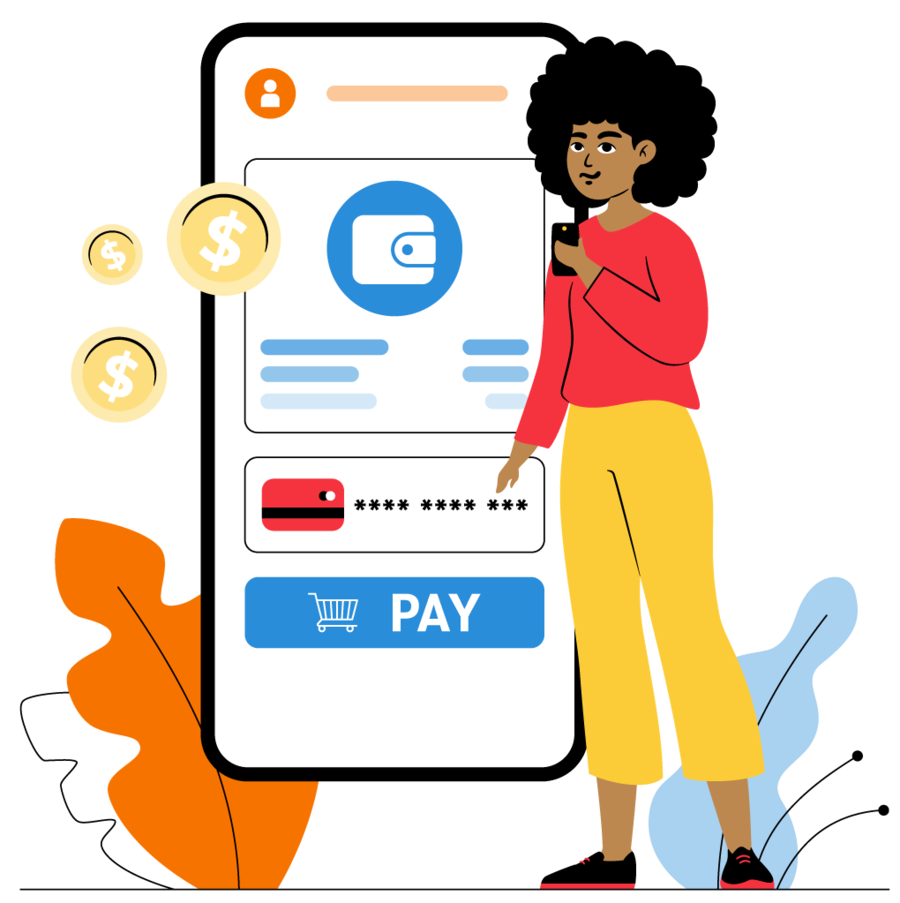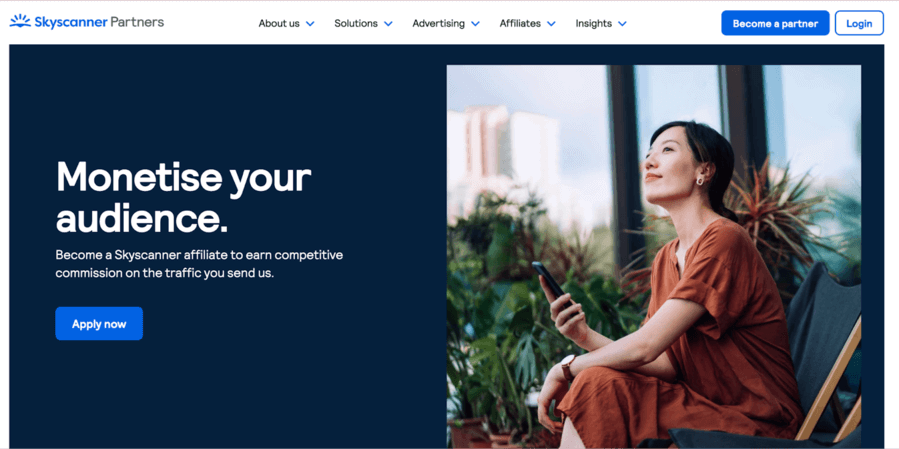
A Forrester survey asked consumers what created a memorable brand experience—and trustworthiness came out on top. Consumer trust is a crucial factor for businesses when it comes to the purchasing decisions of their customers.
Deloitte performed a similar survey exploring emotional drivers for consumers: 89% of consumers believe that trustworthiness is an important factor in their buying decision. When brands create a consistent, predictable experience with their products and services, consumers are more likely to return—forging a path to customer loyalty.
Earning trust takes time and effort. Thankfully, affiliate marketing allows brands to rely on the established goodwill and trust of successful partners. You don’t have to start from scratch. Marketers can dive into this thriving channel and start using compatible partner marketplaces immediately.
These affiliate partnerships offer massive revenue growth potential—alongside lasting positive relationships with online audiences.
The nuts and bolts of affiliate marketing
Affiliate marketing is a low-risk, performance-based marketing channel where affiliate partners promote products for brands.
Brands start by providing unique tracking links for each partner in their affiliate program. These links—added to compelling posts, reviews, recommendations, and more, direct customers to the brand’s website.
Affiliates receive commission payments from the brand for each action—buying products, signing up for free trials, downloading mobile apps, or joining email lists.
Affiliate marketing creates a win-win situation for everyone involved:
- Brands reach target audiences through partnerships with compatible affiliates.
- Publishers (individuals or a company that promotes a merchant’s products) delight their audiences, and support themselves by monetizing posts, blogs, reels, and videos.
- Consumers discover products and brands matching their exact interests—rather than generic, unrelated ads.
Here’s a closer look at the affiliate marketing process:

How affiliate marketing maximizes ROI for ecommerce brands

Affiliate marketing provides a fantastic return on investment (ROI) for brands. Here’s how:
Accelerating revenue growth
With performance-based commission rates, affiliate marketing ensures your budget goes as far as possible. Each dollar of the affiliate channel spending drove an average of $12 in ecommerce contribution in 2021.
Minimizing risk and upfront costs
Since brands only pay commissions after purchases, sign-ups, or clicks, there’s no risk of losing money on ineffective campaigns. Affiliate programs encourage brands to experiment and try fresh outreach strategies. Increased flexibility makes it easy to meet shifting consumer habits and trends.
Expanding audience reach
Conversion rates rise when brands and affiliates align on style, interests, and values. Affiliate marketing helps you find audiences already primed for your specific products and services—no matter how niche.
Want to reach a specific customer type or demographic? Partner with successful affiliates with those followers. Breaking into a new market? Team up with local creators who’ll weave authentic product recommendations into their content. The right affiliate connections make a huge difference.
Encouraging audience trust
Successful publishers and platforms have already built trust with their audiences. Their invested time and effort means each recommendation carries more weight (especially when compared to random ads or unknown brand posts).
Affiliate marketing also increases that audience's trust in you, providing a massive head start for brands.
Building a thriving affiliate program in 4 steps

The right combo of effort, knowledge, and technology helps affiliates drive traffic to your checkout page.
However, it’s not as simple as “if you build it, they will come.” Every successful program has one thing in common: it’s managed effectively and adjusted when needed.
These steps cover the basics of starting a strong affiliate marketing program:
1. Discover like-minded partners
Not all affiliates will be perfect fits—and that’s normal. Consider the following questions as you create ideal partner profiles:
- Which partners match your brand’s strengths?
- Can they endorse your brand with honesty and credibility?
- Do you share brand values?
- Do they work with your competitors?
- Do they attract your target customer base?
Aim for partners with high audience engagement and sincere interest in your products. Inauthentic recommendations quickly turn audiences off. But genuine passion comes across loud and clear.
2. Track performance accurately
Data-driven insights are the best way to grow partnerships. You should know (and share) where each partner lands on the customer journey: Who are the top performers? Which affiliates are receiving too much credit?
Accurate feedback and commission rates encourage each affiliate to lean into their strengths. Tracking links and unique discount codes (and other tactics) help you see the complete picture at all times:
- Boosting partner performance
- Optimizing conversion rates
- Informing decisions
- Avoiding risk
- Preventing fraud
3. Encourage growth with fair commission rates

You don’t have to set contracts and fees in stone. Try basing compensation on performance directly and adjust commission rates frequently. Brands can reward affiliates with different payment models, choosing the best option to match specific business models:
- The CPA (cost per action) models pay a fixed amount for each purchase, app download, or sign up. Brands promoting lower-margin or impulse products benefit from this payment model.
- The CPL (cost per lead) models rewards partners for leads on potential customers. For instance, companies with multiple steps before conversion (like credit applications and approvals) often focus on incentivizing leads through affiliates.
- The CPC (cost per click) models pay commissions for each click on specific posts or tracking links. This payment type perfectly fits campaigns, boosting brand recognition and awareness.
4. Join an affiliate platform
Affiliate platforms use purpose-built software to track and manage partnerships—allowing brands and affiliates to scale up efficiently.

For example, Skyscanner (an online travel agency) smashed its business goals by taking full advantage of their affiliate platform’s resources. The team wanted to raise revenue and bookings without wasting time and resources. Using affiliate software, Skyscanner gathered performance data from a wide range of partners. With everything accessible in one place, the brand sped up decision-making and optimized its affiliate program. The result was 77 percent more bookings and a 19 percent revenue boost.
Tapping into your brand potential with the right affiliate program
Diving into affiliate marketing for the first time can be challenging. However, the right strategies and management software, like nopCommerce partner impact.com, make all the difference, helping you increase sales, gain customers’ trust, and connect with new audiences.
Affiliate partnerships make a perfect foundation for your marketing channel—especially if you want to build lasting customer trust.
Author: Blaire McClure, Product Marketing Manager at impact.com